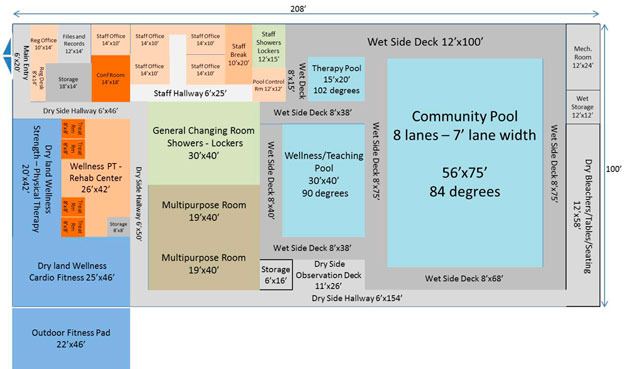Parks, trails and aquatics supporters will likely see a bit of momentum in the coming year.
South Whidbey Parks and Aquatics Foundation leaders met with the South Whidbey Parks and Recreation District commissioners and director last month, hashing out Parks’ goals for the next two years. The result, they hope, is a renewed commitment between the two groups to promote building a public aquatics center and expand use of South Whidbey parks.
Looking for ways to involve the foundation, the parks commissioners met in December to review the district’s comprehensive plan, a governing document outlining projects and growth.
“Overall, we were really impressed with all that the parks district has already done,” said Krista Loercher, the foundation’s president.
Discussion was largely focused on an aquatics center — a top concern for both groups. The facility, as recently re-imagined from its voter-defeated bond measure in 2008, would still largely be devoted to water recreation. A draft document about the facility shows a redesigned space with three separate pools: a 4,200 square-foot community pool, a 1,290 square-foot wellness/teaching pool and a 300 square-foot therapy pool heated to 102 degrees.
The North Whidbey Park & Recreation main pool is 25 meters by 15 meters, its wading pool measures about 10 meters by 6 meters, and there is a hot tub; the building houses the two pools and hot tub, two locker rooms, two front-staff rooms, a staff bathroom and a staff locker room, and two pump rooms for the pools and hot tub.
One possible change for the South Whidbey project is the type of pool. Rather than dig and use concrete, Parks Commissioner Matt Simms said the district is looking at a modular pool, a steel construct that is erected quickly and costs less than a concrete pool.
“It’s an assembled pool that can be taken apart, just like one in your back yard,” Simms said.
What was once a $15.2 million bond for a 50,000 square-foot facility has been whittled down to an estimated $3.7 million. The 2013 concept, which Parks Director Doug Coutts emphasized was still a concept, nearly reduces the project to about half the size of the 2008 plan but will be 75 percent cheaper to build and cost 77 percent less to operate.
Initial estimates by parks leaders have the district recovering 74 percent of its annual $170,000 operating cost for pool maintenance and staffing. The plan remains to build the pool facility on Maxwelton Road near the Community Park entrance on land already owned by South Whidbey Parks.
More than examining the scaled-back pool project, which is at least a few years out, the meeting was organized so the groups could find ways for the foundation to aid smaller needs. Drainage work is needed on some of the ballfields at Community Park, parks district leaders said, as well as a new picnic pavilion, restoring or rebuilding the amphitheater and possibly creating a disc golf course.
“Sometimes we can find money in the budget,” Simms said. “(The staff) are pretty resourceful. But there may be a need for some fundraising there.”
The meeting was also a chance for the foundation to get an update on what the parks district is working on and what it may need in the future, particularly in realm of public support.
The foundation, which has channeled funds from events like the Langley Half Marathon to the district, recently assumed responsibility over the Healthy Island Youth Initiative scholarship which covers program fees and equipment costs for Whidbey Island youths in need.



